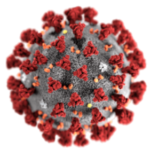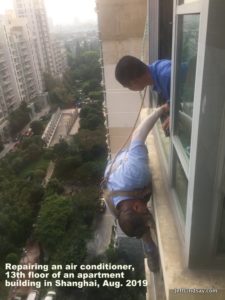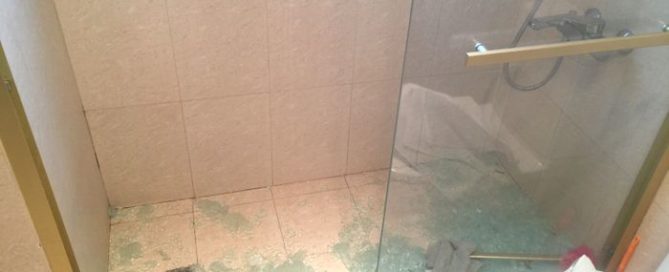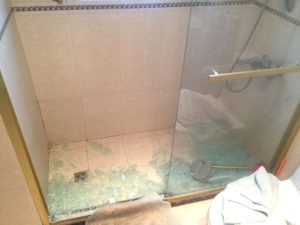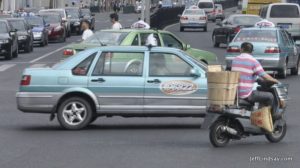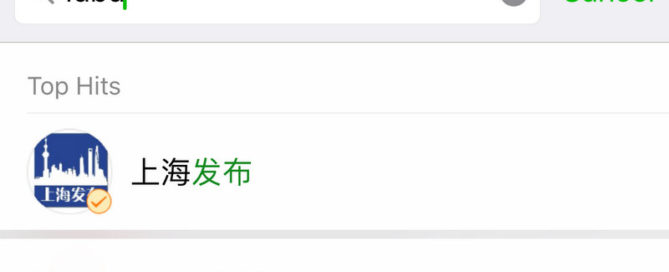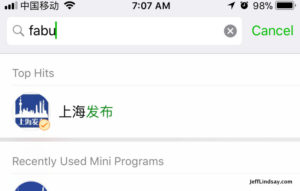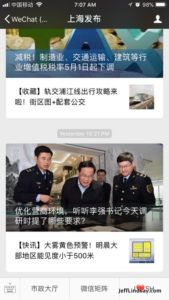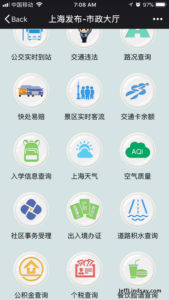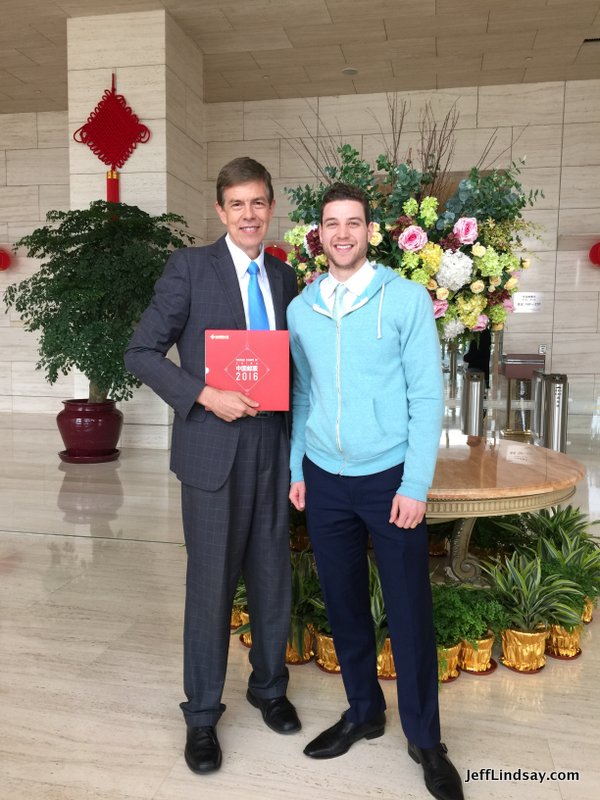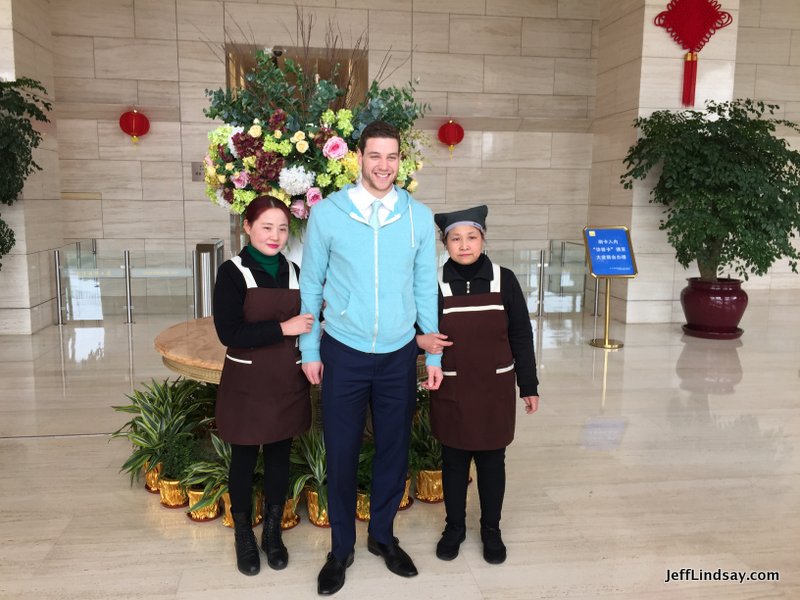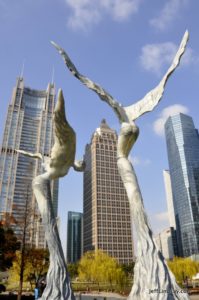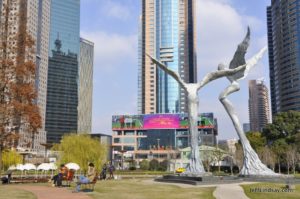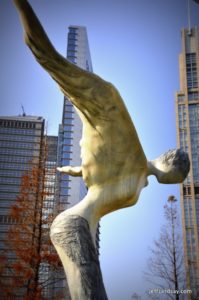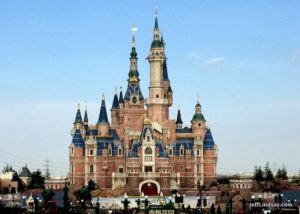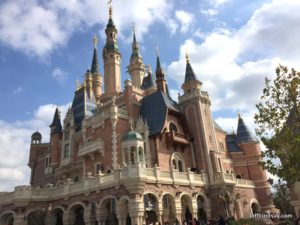Coping with the Corona Virus (SARS-CoV-2): Can Glucosamine from Shrimp, Mushrooms, or Other Sources Help Reduce the Danger of Pneumonia?
Millions of people around the world are worried for China and hope there is soon a full recovery from the dreadful disease, COVID-19. Few things sounds more dreadful than being trapped in a locked-down city where thousands are infected and almost everything is shut down. Pray for the success of Wuhan in conquering this pandemic.
While I expressed my concerns about the severity of these rapidly spreading disease and the impact it is having on so many people, one acquaintance who wishes only to be known as C.T. shared with me some of her tentative findings about the impact of several factors on the death rate of pneumonia found across the world.
Her investigation examined factors that may affect how severe pneumonia becomes in once healthy patients. I find her proposal interesting and potentially valuable enough that I’d like to invite feedback from experts to see if there is any merit to her thinking. If her work could help alleviate some of the suffering that COVID-19 is causing, and specifically decrease the mortality rate, that would be fantastic. Perhaps there’s nothing there. Intelligent feedback is what I am looking for.
Please note that I am not making any medical claims or suggesting that nutrition or nutritional supplements can directly reduce the risk of coming down with or dying from COVID-19 or pneumonia in general. I am not seeking to spread rumors about the disease (spreading rumors is strictly illegal in China, especially rumors or incorrect information about sensitive issues such as COVID-19 and its management, and I strive to abide by the regulations), but am inviting experts to review a tentative possibility that could be helpful to China and other nations.
C.T.’s hypothesis deals with the possible role of glucosamine and other aspects of nutrition in reducing the risk of pneumonia. Glucosamine is a natural material found in cartilage and in the shells of shrimp, crabs, etc. and the skeletons of marine animals. It is also present in China’s abundant and delicious mushrooms and other fungi (see “Dietary Sources” below). It is an antioxidant that our body can produce, though it is also commonly sold as a dietary supplement said to help treat osteoarthritis and reduce pain in joints (see an overview of reports on glucosamine at ScienceDirect). In what follows, I’ll add some comments to C.T.’s points and mix a few finds from my searching with some of the things she has found.
The relationship between glucosamine and cartilage health has a reasonable basis (though for relieving pain, as the BBC reports, it’s not clear that glucosamine supplements actually do more than a good, full-strength placebo), and cartilage is present in several vital parts of the lungs, from the trachea through the bronchi. C.T.’s hypothesis is that viral disease may infect chondrocytes, cells that product cartilage, and that our own immune system in response may then attack those cells and lead to tissue damage that allows naturally present bacteria to cause severe infection. But could there be a relationship between glucosamine and pneumonia mortality? C.T. proposes a mechanism involving the SOX-9 protein and its role in driving a “cytokine storm” where dangerous cycles can lead to severe illness. She argues that dietary influences that inhibit or enhance the effect of SOX-9 (i.e., down regulate or up regulate) may help explain significant differences in pneumonia mortality among nations, with tea and perhaps pomegranate juice being likely to up regulate SOX-9 while diets high in shrimp and cartilage may provide the glucosamine that can may regulate SOX-9. You can see her recent comments on the Coronavirus and the crisis in Wuhan in her post of Jan. 31, 2020, “My two bits about the novel coronavirus from Wuhan,” which points to her earlier post with the key information she wishes to share.
Whether or not C.T.’s proposed mechanisms and dietary considerations are correct, there are peer-reviewed studies suggesting that glucosamine can in fact reduce mortality from respiratory illness.
The scientific literature on glucosamine tends to focus on its role in cartilage formation and in alleviating problems with joints and bones. But there are some surprising finds related to other effects. Here are a few to consider (the first and fourth were pointed out by C.T. in her original work):
1. Griffith A. Bell et al., “Use of glucosamine and chondroitin in relation to mortality,” European Journal of Epidemiology, 27/8 (2012): 593-603; https://www.jstor.org/stable/23272500.
Abstract: Glucosamine and chondroitin are products commonly used by older adults in the US and Europe. There is limited evidence that they have anti-inflammatory properties, which could provide risk reduction of several diseases. However, data on their long-term health effects is lacking. To evaluate whether use of glucosamine and chondroitin are associated with cause-specific and total mortality. Participants (n = 77,510) were members of a cohort study of Washington State (US) residents aged 50-76 years who entered the cohort in 2000-2002 by completing a baseline questionnaire that included questions on glucosamine and chondroitin use. Participants were followed for mortality through 2008 (n = 5,362 deaths). Hazard ratios (HR) for death adjusted for multiple covariates were estimated using Cox models. Current (baseline) glucosamine and chondroitin use were associated with a decreased risk of total mortality compared to never use. The adjusted HR associated with current use of glucosamine (with or without chondroitin) was 0.82 (95 % CI 0.75-0.90) and 0.86 (95 % CI 0.78-0.96) for chondroitin (included in two-thirds of glucosamine supplements). Current use of glucosamine was associated with a significant decreased risk of death from cancer (HR 0.87 95 % CI 0.76-0.98) and with a large risk reduction for death from respiratory diseases (HR 0.59 95 % CI 0.41-0.83). Use of glucosamine with or without chondroitin was associated with reduced total mortality and with reductions of several broad causes of death. Although bias cannot be ruled out, these results suggest that glucosamine may provide some mortality benefit. [For links to references cited by Bell et al., see the Springer page for this article.]
2. Kun-Han Chuang et al., “Attenuation of LPS-induced Lung Inflammation by Glucosamine in Rats,” American Journal of Respiratory Cellular Molelcular Biology, 49/6 (Dec. 2013): 1110-9.
Abstract: Acute inflammation is often observed during acute lung injury (ALI) and acute respiratory distress syndrome. Glucosamine is known to act as an anti-inflammatory molecule. The effects of glucosamine on acute lung inflammation and its associated mechanisms remain unclear. The present study sought to address how glucosamine plays an anti-inflammatory role in acute lung inflammation in vivo and in vitro. Using the LPS intratracheal instillation-elicited rat lung inflammation model, we found that glucosamine attenuated pulmonary edema and polymorphonuclear leukocyte infiltration, as well as the production of TNF-α, IL-1β, cytokine-induced neutrophil chemoattractant (CINC)-1, macrophage inflammatory protein (MIP)-2, and nitric oxide (NO) in the bronchoalveolar lavage fluid (BALF) and in the cultured medium of BALF cells. The expression of TNF-α, IL-1β, IFN-γ, CINC-1, MIP-2, monocyte chemotactic protein-1, and inducible NO synthase (iNOS) in LPS-inflamed lung tissue was also suppressed by glucosamine. Using the rat alveolar epithelial cell line L2, we noted that the cytokine mixture (cytomix)-regulated production and mRNA expression of CINC-1 and MIP-2, NO production, the protein and mRNA expression of iNOS, iNOS mRNA stability, and iNOS promoter activity were all inhibited by glucosamine. Furthermore, glucosamine reduced LPS-mediated NF-κB signaling by decreasing IκB phosphorylation, p65 nuclear translocation, and NF-κB reporter activity. Overexpression of the p65 subunit restored the inhibitory action of glucosamine on cytomix-regulated NO production and iNOS expression. In conclusion, glucosamine appears to act as an anti-inflammatory molecule in LPS-induced lung inflammation, at least in part by targeting the NF-κB signaling pathway.
3. Yuh-Lin Wu et al., “Glucosamine Attenuates Cigarette Smoke-Induced Lung Inflammation by Inhibiting ROS-sensitive Inflammatory Signaling,” Free Radical Biology and Medicine, 69 (April 2014): 208-18; DOI: 10.1016/j.freeradbiomed.2014.01.026.
Abstract
Cigarette smoking causes persistent lung inflammation that is mainly regulated by redox-sensitive pathways. We have reported that cigarette smoke (CS) activates a NADPH oxidase-dependent reactive oxygen species (ROS)-sensitive AMP-activated protein kinase (AMPK) signaling pathway leading to induction of lung inflammation. Glucosamine, a dietary supplement used to treat osteoarthritis, has antioxidant and anti-inflammatory properties. However, whether glucosamine has similar beneficial effects against CS-induced lung inflammation remains unclear. Using a murine model we show that chronic CS exposure for 4 weeks increased lung levels of 4-hydroxynonenal (an oxidative stress biomarker), phospho-AMPK, and macrophage inflammatory protein 2 and induced lung inflammation; all of these CS-induced events were suppressed by chronic treatment with glucosamine. Using human bronchial epithelial cells, we demonstrate that cigarette smoke extract (CSE) sequentially activated NADPH oxidase; increased intracellular levels of ROS; activated AMPK, mitogen-activated protein kinases (MAPKs), nuclear factor-κB (NF-κB), and signal transducer and activator of transcription proteins 3 (STAT3); and induced interleukin-8 (IL-8). Additionally, using a ROS scavenger, a siRNA that targets AMPK, and various pharmacological inhibitors, we identified the signaling cascade that leads to induction of IL-8 by CSE. All these CSE-induced events were inhibited by glucosamine pretreatment. Our findings suggest a novel role for glucosamine in alleviating the oxidative stress and lung inflammation induced by chronic CS exposure in vivo and in suppressing the CSE-induced IL-8 in vitro by inhibiting both the ROS-sensitive NADPH oxidase/AMPK/MAPK signaling pathway and the downstream transcriptional factors NF-κB and STAT3.
4. Jean-Noël Gouze et al., “Exogenous glucosamine globally protects chondrocytes from the arthritogenic effects of IL-1β,” Arthritis Research and Therapy, 8 (2006), article #R173; https://doi.org/10.1186/ar2082. (PDF also available.)
Abstract
The effects of exogenous glucosamine on the biology of articular chondrocytes were determined by examining global transcription patterns under normal culture conditions and following challenge with IL-1β. Chondrocytes isolated from the cartilage of rats were cultured in several flasks either alone or in the presence of 20 mM glucosamine. Six hours later, one-half of the cultures of each group were challenged with 10 ng/ml IL-1β. Fourteen hours after this challenge, RNA was extracted from each culture individually and used to probe microarray chips corresponding to the entire rat genome. Glucosamine alone had no observable stimulatory effect on the transcription of primary cartilage matrix genes, such as aggrecan, collagen type II, or genes involved in glycosaminoglycan synthesis; however, glucosamine proved to be a potent, broad-spectrum inhibitor of IL-1β. Of the 2,813 genes whose transcription was altered by IL-1β stimulation (P < 0.0001), glucosamine significantly blocked the response in 2,055 (~73%). Glucosamine fully protected the chondrocytes from IL-1-induced expression of inflammatory cytokines, chemokines, and growth factors as well as proteins involved in prostaglandin E2 and nitric oxide synthesis. It also blocked the IL-1-induced expression of matrix-specific proteases such as MMP-3, MMP-9, MMP-10, MMP-12, and ADAMTS-1. The concentrations of IL-1 and glucosamine used in these assays were supraphysiological and were not representative of the arthritic joint following oral consumption of glucosamine. They suggest, however, that the potential benefit of glucosamine in osteoarthritis is not related to cartilage matrix biosynthesis, but is more probably related to its ability to globally inhibit the deleterious effects of IL-1β signaling. These results suggest that glucosamine, if administered effectively, may indeed have anti-arthritic properties, but primarily as an anti-inflammatory agent.
In light of these studies, there seems to be reason to believe that glucosamine may be helpful in reducing the mortality of pneumonia. If so, being prepared to have a diet with some glucosamine sources or to have some glucosamine on hand might be reasonable should COVID-19 become a serious threat in your community, or if you are traveling under conditions where you may be exposed to the SARS-CoV-2 virus. Your intelligent feedback on this is welcome — but anonymous trolling comments that I too often tolerate will be deleted here in order to increase the chance of readers finding intelligent comments that help us better understand the issues raised here.
C.T.’s Proposals on Mechanism and Diet
C.T. wrote the following a few days ago:
Hi, Jeff, I know it sounds presumptuous, but I think I figured out which environmental triggers are involved in making it so people exposed to this virus do/do not become symptomatic and how severe the symptoms are.
1) Damage to the hyaline cartilage (by the immune system targeting infected cartilage cells) is much less likely to happen where the diet contains glucosamine (in shrimp paste and cartilage), where there is no exposure to dry and cold air, and where there is not bleach being sprayed in the air (seriously, have Hubei’s bureaucrats never heard of chemical pneumonia?).
2) The cartilage cells, if damaged, think they have to rebuild the hyaline cartilage matrix and so secrete chondroitin sulphate and other cartilage matrix molecules; the gene SOX9 is very instrumental in doing this, but if it is overly active it can cause there to be too many such molecules building up in the lungs. Voila! Viral pneumonia. What gets SOX9 going? EGCG appears to “stimulate exuberant cartilage matrix secretion” (see https://www.ncbi.nlm.nih.gov/pmc/articles/PMC4247298/), and EGCG is THE special molecule in tea leaves. What did the poor people of Wuhan ingest in their apartment quarantines: rice, veggies, legumes, and tea–no meat or shrimp. What else affects SOX9? Turmeric (curcumin decreases SOX9 activity–lucky Thailand), Fluoride (also helps decrease SOX9 activity–lucky India), Pomegranate (increases SOX9–unlucky Iran, where they drink pomegranate juice when sick). This hypothesis holds up even in Italy, where they drink wine and coffee all the time except when they’re trying to lose weight or fight a cold–then they drink green tea. And it utterly refutes all the stupid internet trolls who were going on and on about how “Chinese people have horrible hygiene.”
C.T.’s original post on the relationship between glucosamine and mortality in pneumonia and the possible mechanisms involved is “Glucosamine to protect cartilage during influenza infection,” Petticoat Government, Feb. 5, 2018. Here is an excerpt with the key arguments she makes:
1) The flu infects chondrocytes, the cells in cartilage. They are the only cells in hyaline cartilage, which type of cartilage is coincidentally found in places–joints, rib ends, nose, larynx, trachea, bronchi–that are among the hardest hit by influenza. (https://www.britannica.com/science/cartilage)
2) Influenza-infected chondrocytes don’t seem to actually experience obvious damage until the body’s immune system goes on the attack. (https://www.ncbi.nlm.nih.gov/pmc/articles/PMC422866/; http://onlinelibrary.wiley.com/doi/10.1046/j.1365-2567.2003.01621.x/full) [Edited 2/17/2018: Someone pointed out to me that chondrocytes are within an extracellular matrix that has no blood vessels, so other cells, including attacking immune cells, can’t reach them. I looked more into that issue and found a 2015 cartilage transplant study which found that cartilage isn’t as immune-privileged as it used to be believed it was (https://www.ncbi.nlm.nih.gov/pmc/articles/PMC4522233/). I suspect that chondroblasts–the immature chondrocytes next to the blood-vessel-containing perichondrium–are the first chondrocytes which the immune system cells attack, and then due to their destruction the cartilage matrix becomes compromised; if that compromised state becomes severe enough, immune cells can then gain access to the mature chondrocytes within, as well.]
3) Cytokines are part of the immune system’s attack arsenal. The cytokine IL-1beta is a critical component of lung inflammation during infection with influenza type A H1N1. (http://onlinelibrary.wiley.com/doi/10.1002/jmv.24138/abstract;Â https://www.ncbi.nlm.nih.gov/pubmed/27714503)
4) Glucosamine–a natural compound found in cartilage–happens to protect chondrocytes by being a potent inhibitor of IL-1beta. (https://link.springer.com/article/10.1186/ar2082)
5) Damaged cartilage in the trachea/bronchi could allow for more penetrating infection by viruses/bacteria that normally would not be able to do much harm and in that way make flu sufferers much more susceptible to pneumonia. Most of the people who died from the 1918 flu died because “bacteria that normally inhabit the nose and throat invaded the lungs along a pathway created when the virus destroyed the cells that line the bronchial tubes and lungs.” (https://www.nih.gov/news-events/news-releases/bacterial-pneumonia-caused-most-deaths-1918-influenza-pandemic)
6) People who take glucosamine (it’s a common supplement for arthritis) are much less likely to die of respiratory illnesses than their peers. (https://link.springer.com/article/10.1007/s10654-012-9714-6)
So if you’re worried about influenza, it might be worth it to buy some glucosamine and take it when you’re exposed to influenza so you can protect your hyaline cartilage and thus make yourself less likely to develop pneumonia….
Eat well cooked, or non-manufactured source- glucosamine rich foods (like shrimp) to help the cartilage stay strong, and stay away from tea plant and pomegranate for a second. (Pomegranates are healthy, but are rich in natural SOX9 stimulants… Which is good… But on a viral, over-production level ((what happens with this virus)) you get to much in the lungs too fast, and therefore pneumonia.)
By the way, I have worked with nearly pure EGCG as part of my consumer products research work in the past and was often surprised by how reactive it is. Dissolve a little white EGCG in water and combine with baking soda or other alkaline material and find out what strange, ugly stains you can create on materials such as tissue paper or fabrics after allowing it to sit for a few hours. It has many effects in the body, some clearly positive, but I can imagine that there are situations where this reactive material isn’t helpful. Can it play the role that C.T. suggests? I don’t know, but would like to learn more. Is it possible that giving tea to the ill might not be a good idea? I don’t know, but it may not be helping in Wuhan, though so much of what’s happening there remains opaque. If you have additional useful information, please let me know.
Dietary Sources
C.T. points to shrimp as an important dietary source of glucosamine. I should add that it appears that the glucosamine of shrimp comes from the shell, not the flesh. In Asia, many people eat the shells, or so it seems to me, especially small shrimp where the shell is quite thin and, in fried shrimp, can be tasty and easy to eat. She also mentions gristle, which is commonly consumed, especially chicken gristle. Another source may be soups in which the bones of animals have been stewed for a long period of time. Bone-rich soup, at least in China, especially when stewed long enough to create a white broth, is widely held to be very nutritious and ideal for those who are ill, and probably supplies some glucosamine. I find it delicious, too.
There are also options for vegetarians. Mushrooms contain chitin, the widespread natural polymer found in the shells of shrimp, crabs, insects, etc., and glucosamine is one of the building blocks of chitin and I believe it can be released when digested. See Tao Wu et al., “Chitin and Chitosan–Value-Added Products From Mushroom Waste,” Journal of Agricultural Food Chemistry, 52 /26 (Dec. 29, 2004): 7905-10;Â DOI: 10.1021/jf0492565. Also see Pin Zhang et al., “Kinetic Models for Glucosamine Production by Acid Hydrolysis of Chitin in Five Mushrooms,” International Journal of Chemical Engineering, 2020, article ID 5084036 (2020); https://doi.org/10.1155/2020/5084036.
Unfortunately, for those in Wuhan, there are reports that the diet is now necessarily simple and thus there may be less meat (bone and cartilage included) and less shrimp than usual, so the protective effects of glucosamine, if real, may be less available than normal. C.T. worries that the combination of cold, stress, and confinement, coupled with a low-glucosamine and high-tea diet and even the occasional exposure to bleach or other harsh chemicals in the effort to kill the virus in many places might make a perfect storm for elevated pneumonia risk for those infected with the virus. If C.T.’s proposal is correct, then bringing glucosamine or glucosamine-rich foods to Wuhan and other affected areas may be a helpful step to help reduce loss of life.
One of China’s great blessings when it comes to food is the richness of its fungi, with numerous wild and domesticated mushrooms and other fungi that are so delicious. Some are far too expensive for me, but there are many varieties that are relatively inexpensive but very nutritious, especially the black wood ear fungus called mu er (literally wood ear). It’s more expensive than rice or common vegetables like carrots, onions, or cabbage, but it’s still quite cheap and has also been touted for its immune strengthening benefits. I order some much of the time when I’m in Chinese restaurants in China. Perhaps adding this to the diet of the people in Wuhan and other afflicted cities could help?
Is Glucosamine Safe for Those Allergic to Shrimp?
Finally, one important issue is whether those with seafood allergies, including shellfish allergies, should take glucosamine since it is often made from the shells of shrimp. Please consult with your physician and don’t take crazy risks based on random bloggers. However, something to consider as you discuss such matters with competent medical authorities is that several studies suggest that commercially available high-quality glucosamine may not contain the allergens that are harmful to some people. Here are a couple studies to consider:
J. Villacis et al., “Do Shrimp-Allergic Individuals Tolerate Shrimp-Derived Glucosamine?,” Clinical and Experimental Allergy, 36/11 (Nov. 2006): 1457-61; DOI: 10.1111/j.1365-2222.2006.02590.x.
Abstract
Background: There is concern that shrimp-allergic individuals may react to glucosamine-containing products as shrimp shells are a major source of glucosamine used for human consumption.
Objective: The purpose of this study was to determine whether shrimp-allergic individuals can tolerate therapeutic doses of glucosamine.
Methods: Subjects with a history of shrimp allergy were recruited and tested for both shrimp reactivity via a prick skin test and shrimp-specific IgE by an ImmunoCAP assay. Fifteen subjects with positive skin tests to shrimp and an ImmunoCAP class level of two or greater were selected for a double-blind placebo-controlled food challenge (DBPCFC) using glucosamine-chondroitin tablets containing 1,500 mg of synthetically produced (control) or shrimp-derived glucosamine. Immediate reactions, including changes in peak flow and blood pressure, and delayed reactions (up to 24 h post-challenge) via questionnaire were noted and assessed.
Results: All subjects tolerated 1,500 mg of both shrimp-derived or synthetic glucosamine without incident of an immediate hypersensitivity response. Peak flows and blood pressures remained constant, and no subject had symptoms of a delayed reaction 24 h later.
Conclusion: This study demonstrates that glucosamine supplements from specific manufacturers do not contain clinically relevant levels of shrimp allergen and therefore appear to pose no threat to shrimp-allergic individuals.
Heather C. Gray, et al., “Is glucosamine safe in patients with seafood allergy?,” Jounral of Allergy and Clinical Immunology, 114/2 (August 2004) 459–460; DOI: https://doi.org/10.1016/j.jaci.2004.05.050 (PDF also available).
Excerpt:
Six subjects participated in the study. All 6 had a history consistent with a systemic reaction to shellfish. All 6 had positive skin prick test responses to shrimp, crab, lobster, or a combination of these. All 6 had negative skin test responses to the glucosamine extract (Table I) and uneventful oral challenges with glucosamine, with no change in skin, vital signs, or spirometry….
Approximately 600 patients must be recruited to ensure that the chance of rejecting an allergy rate of at least 0.5% is less than 0.05. This pilot study, which indicates that glucosamine is probably safe for patients with shellfish allergy, emphasizes the need for further investigation, with larger studies looking at different shellfish allergens and the consistency of glucosamine formulations.
Further research is needed on this issue and others raised above. If you have other information on the food safety issue or other issues raised here, please share. Thanks!
I welcome your civil, thoughtful feedback.
Other Related Resources:
Theodore M. Brasky, “Use of Glucosamine and Chondroitin and Lung Cancer Risk in the VITamins And Lifestyle (VITAL) Cohort,” Cancer Causes and Control, 22/9 (Sept. 2011): 1333-42.
Jody Braverman, “Nutritional Value of Bone Gristle,” LiveStrong.com, September 30, 2019.
Update, 2/28/2020: There’s one study C.T. mentioned suggesting that chondroitin, which is often combined with glucosamine in supplements, can cause pneumonia rather than prevent it, based on a single patient. See Takeshi Satomura et al., “A Case of Drug-induced Pulmonary Disease Considered to be Caused by a Supplement Containing Chondroitin,” The Journal of the Japan Society for Respiratory Endoscopy, 37/2 (2015): 214-18; DOI https://doi.org/10.18907/jjsre.37.2_214.
AbstractÂ
Drug-induced pulmonary disease can be caused by a variety of drugs including supplements. We examined a case of drug-induced organizing pneumonia induced by a supplement containing chondroitin. Case. An 80-year-old man had been taking supplements for knee pain since early July 2013 and subsequently developed a cough and fever. A chest radiograph demonstrated infiltrative shadows, and he was admitted to our hospital. His condition did not improved with antibiotic treatment and bronchoscopy was performed for diagnostic purposes. A transbronchial lung biopsy specimen showed organizing pneumonia, and the patient’s condition was ameliorated with steroid therapy. We established a diagnosis of drug-induced pulmonary disease based on the results of a lymphocyte stimulation test for a supplement containing chondroitin. Conclusions. We conclude that the use of supplements containing chondroitin may result in drug-induced pulmonary disease.
That single case may not be meaningful, but if you’re concerned and want more glucosamine after consulting with medical personnel, you can just use glucosamine alone or a diet with glucosamine. Chondroitin tends to me relatively more expensive anyway. Consult your physician and don’t rely on bloggers.

